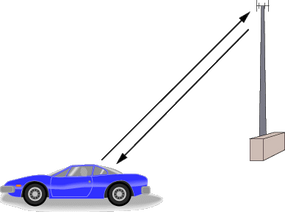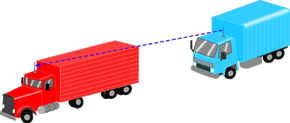Cell-phone Frequencies
In the dark ages before cell phones, people who really needed mobile-communications ability installed radio telephones in their cars. In the radio-telephone system, there was one central antenna tower per city, and perhaps 25 channels available on that tower. This central antenna meant that the phone in your car needed a powerful transmitter -- big enough to transmit 40 or 50 miles (about 70 kilometers). It also meant that not many people could use radio telephones -- there just were not enough channels.
The genius of the cellular system is the division of a city into small cells. This allows extensive frequency reuse across a city, so that millions of people can use cell phones simultaneously.
Advertisement
A good way to understand the sophistication of a cell phone is to compare it to a CB radio or a walkie-talkie.

- Full-duplex vs. half-duplex - Both walkie-talkies and CB radios are half-duplex devices. That is, two people communicating on a CB radio use the same frequency, so only one person can talk at a time. A cell phone is a full-duplex device. That means that you use one frequency for talking and a second, separate frequency for listening. Both people on the call can talk at once.
- Channels - A walkie-talkie typically has one channel, and a CB radio has 40 channels. A typical cell phone can communicate on 1,664 channels or more.
- Range - A walkie-talkie can transmit about 1 mile (1.6 kilometers) using a 0.25-watt transmitter. A CB radio, because it has much higher power, can transmit about 5 miles (8 kilometers) using a 5-watt transmitter. Cell phones operate within cells, and they can switch cells as they move around. Cells give mobile phones incredible range. Someone using a cell phone can drive hundreds of miles and maintain a conversation the entire time because of the cellular approach.
In a typical analog cell phone system in the United States, the cell phone carrier receives about 800 frequencies to use across the city. The carrier chops up the city into cells. Each cell is typically sized at about 10 square miles (26 square kilometers). Cells are normally thought of as hexagons on a big hexagonal grid.
Because cell phones and base stations use low-power transmitters, the same frequencies can be reused in nonadjacent cells. The two purple cells can reuse the same frequencies.
Each cell has a base station that consists of a tower and a small building containing the radio equipment. We'll get into base stations later. First, let's examine the "cells" that make up a cellular system.
